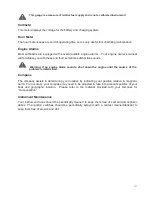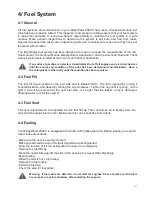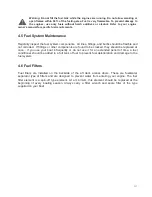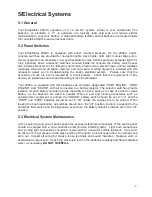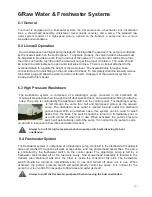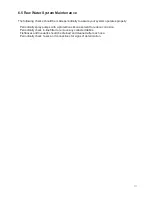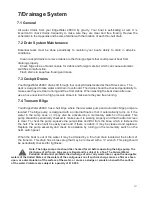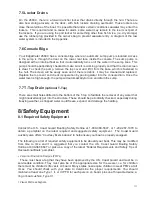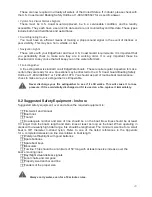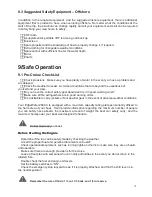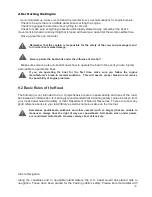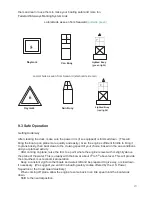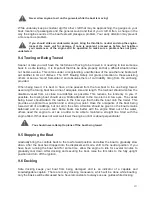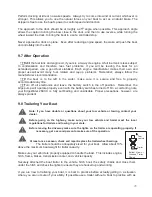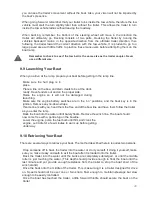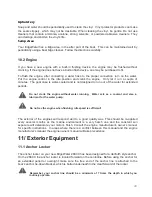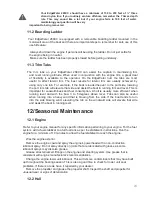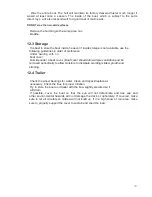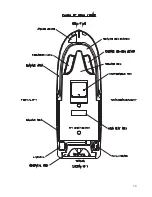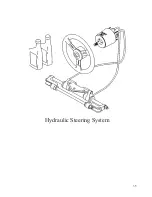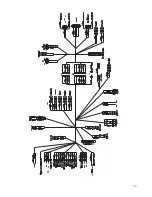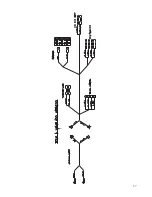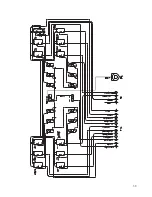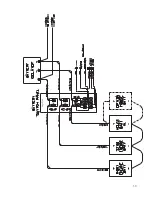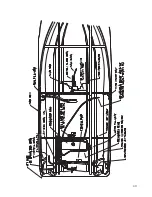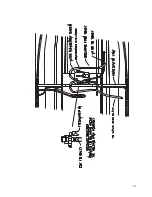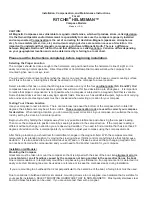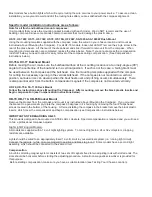
26
you can see the trailer’s movement without the boat. Also, your vision will not be impaired by
the boat’s presence.
When going forward, remember that your trailer turns inside the tow vehicle, therefore the tow
vehicle must start the turn slightly later than without the trailer. This allows the trailer to turn
inside the tow vehicle radius without leaving the roadway.
When backing, remember, the bottom of the steering wheel will move in the direction the
trailer will ultimately go. Backing consists of two parts, breaking the trailer by turning the
vehicle’s backward motion in the opposite direction from the ultimate trailer direction, then
following the trailer toward the correct direction with the tow vehicle. It is prudent to go to a
large paved area with little traffic to practice these maneuvers before attempting them on the
boat ramp.
Remember to check to see if the tow ball is the same size as the trailer coupler. Never
use a different size.
9.9 Launching Your Boat
When you arrive at the ramp, prepare your boat before getting in the ramp line.
Make sure the hull plug is in
place.
Place a line on the bow and stern cleats to be at the dock
ready. Have fenders out and on the proper side.
Raise the engine so it will not be damaged during
launching.
Make sure the engine battery switches are in the “on” positions, and the boat key is in the
ignition. Remove any tie-down straps.
If someone is with you, hand them the free end ofthe bow line and have them follow the trailer
as you enter the ramp.
Back the boat into the water until it barely floats. Remove the winch line. The boat should
now come free with a gentle tug on the bowline.
Lower the engine, pump the fuel bulb until firm and crank the
engine. Let it idle for a few minutes to warm up before getting
under way.
9.10 Retrieving Your Boat
There are several ways to retrieve your boat. The method described herein requires two persons.
Drop someone off to back the trailer into the water, or do it yourself. If doing it yourself, make
sure you make it easy and safe to exit the boat after it is loaded onto the trailer.
Back the trailer into the water until the bunks are completely submerged, or until the middle
roller is just touching the water. (This depth should provide enough to float the boat until the
last minute and yet provide enough resistance from the trailer to stop the boat short of the
winch stand.)
Drive the boat onto the middle of the trailer. This is assuming it is a trailer designed for drive
on. Speed should not be over one or two knots. Fast enough to maintain steerage but slow
enough to be easily controlled.
Once the boat has touched the trailer, a little forward throttle should secure the boat on the
trailer
Summary of Contents for 268 Center Console
Page 1: ...268CC 268 Center Console OWNER ASSISTANCE MANUAL Revised 2014...
Page 32: ...31 Appendix 268CC...
Page 33: ...34...
Page 34: ...35 Hydraulic Steering System...
Page 35: ...36...
Page 36: ...37...
Page 37: ...38...
Page 38: ...39...
Page 39: ...40...
Page 40: ...41...
Page 112: ......
Page 129: ......
Page 146: ...8 Rotation of Ports 1 2 3 4 5 6 7 1 Rotation of Pump Head 2 3 4 5...
Page 186: ...38 A B 50 mm C 20 mm...

